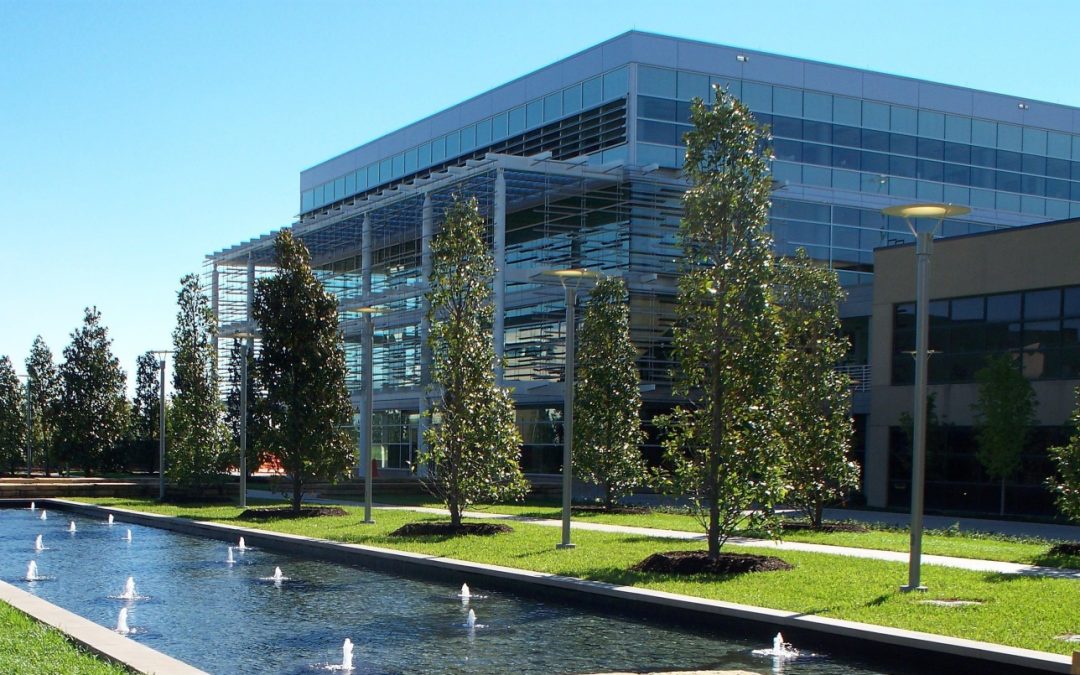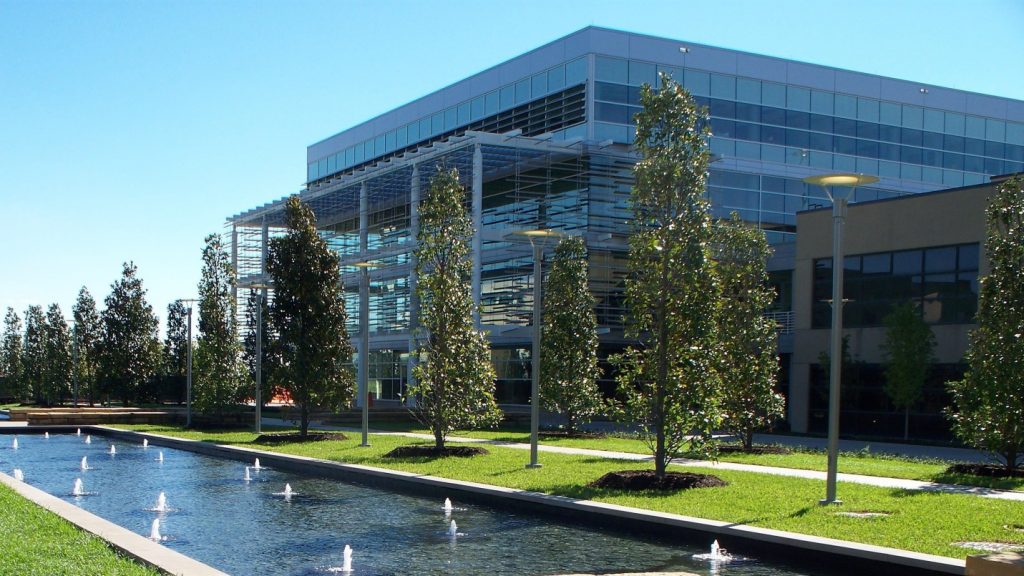
by Fronetics | Sep 21, 2015 | Blog, Marketing, Strategy, Supply Chain, Website Development
Last updated: November 18, 2024
Having a mobile-friendly website isn’t just an option in 2025 — it’s a necessity. With mobile devices accounting for over 60% of web traffic and search engines increasingly considering mobile-friendliness in results, supply chain businesses can’t afford to neglect the mobile user experience. This guide will walk you through the essential steps to optimize your supply chain website for mobile users in 2025.
Why Mobile-First Matters More Than Ever
The shift to mobile-first design has been dramatic over the past few years. Users now expect seamless experiences across all devices, and search engines prioritize mobile-friendly websites in their rankings. A poorly optimized mobile site can lead to:
- Higher bounce rates
- Lower conversion rates
- Decreased search engine rankings
- Reduced customer trust
- Lost business opportunities
Essential Mobile Optimization Strategies for 2025
1. Implement Responsive Design 2.0
While responsive design has been around for years, modern implementations require more sophistication. Your website should:
– Use fluid grid systems that adapt to any screen size
– Implement dynamic typography that scales properly
– Utilize container queries for more granular control
– Employ adaptive loading patterns based on device capabilities
– Leverage CSS subgrid for complex nested layouts
2. Optimize Performance
Speed is crucial for mobile users. Focus on these performance metrics:
– Aim for a Core Web Vitals score in the top 75th percentile
– Keep First Contentful Paint (FCP) under 1.8 seconds
– Ensure Largest Contentful Paint (LCP) occurs within 2.5 seconds
– Maintain Cumulative Layout Shift (CLS) below 0.1
– Optimize Time to Interactive (TTI) to under 3.8 seconds
3. Embrace Progressive Web App (PWA) Features
PWAs continue to bridge the gap between web and native apps. Implement:
– Offline functionality
– Push notifications
– App-like navigation
– Home screen installation
– Background sync capabilities
4. Focus on Touch-Friendly Navigation
Mobile users interact with their devices differently than desktop users. Ensure your design accounts for:
– Touch targets of at least 44×44 pixels
– Adequate spacing between interactive elements
– Gesture-based navigation options
– Easy-to-reach navigation elements
– Clear visual feedback for interactions
5. Optimize Media for Mobile
Media optimization is crucial for mobile performance:
– Implement responsive images using srcset and sizes attributes
– Use next-gen image formats like WebP and AVIF
– Employ lazy loading for images and videos
– Optimize video delivery with adaptive bitrate streaming
– Consider reduced motion preferences
6. Implement Smart Content Prioritization
Mobile users need quick access to essential information:
– Use progressive disclosure techniques
– Implement collapsible sections for lengthy content
– Prioritize critical content above the fold
– Use accordion patterns for complex information
– Consider implementing content parity with context
Advanced Mobile Optimization Techniques
1. Leverage AI-Driven Personalization
Modern mobile experiences can benefit from AI:
– Implement predictive loading based on user behavior
– Use AI to optimize image compression
– Employ machine learning for content recommendations
– Utilize AI-powered chatbots for mobile support
– Implement smart search with natural language processing
2. Focus on Mobile Security
Security concerns are paramount for mobile users:
– Implement biometric authentication options
– Use HTTPS everywhere
– Enable two-factor authentication
– Implement Content Security Policy (CSP)
– Regular security audits for mobile-specific vulnerabilities
3. Optimize for Voice Search
Voice search optimization is increasingly important:
– Implement structured data markup
– Focus on conversational keywords
– Optimize for featured snippets
– Ensure fast loading times for voice results
– Create voice-friendly navigation options
Testing and Monitoring
Regular testing is crucial for maintaining mobile optimization:
Tools to Use:
- Google Mobile-Friendly Test
- Chrome DevTools’ Device Mode
- GTmetrix Mobile Testing
- Real Device Testing Labs
- User Session Recording Tools
Metrics to Monitor:
- Mobile conversion rates
- Page load times on different devices
- Mobile-specific bounce rates
- User engagement metrics
- Mobile search rankings
Common Mobile Optimization Mistakes to Avoid
1. Neglecting Mobile Forms
Keep forms short and simple
– Use appropriate input types
– Implement auto-fill where possible
– Provide clear error messages
– Use smart keyboards for different input types
2. Poor Touch Targets
– Avoid placing touch targets too close together
– Make buttons and links easily tappable
– Provide clear visual feedback
– Consider thumb zones in design
– Test with different hand sizes
3. Ignoring Mobile Context
– Consider user location and context
– Optimize for on-the-go usage
– Account for varying network conditions
– Design for different lighting conditions
– Consider device capabilities
Future-Proofing Your Mobile Strategy
As we move forward in 2025, consider these emerging trends:
– 5G optimization opportunities
– Augmented Reality (AR) integration
– Foldable device compatibility
– AI-driven personalization
– Enhanced privacy features
Conclusion
Mobile optimization is an ongoing process that requires regular attention and updates. By implementing these strategies, you’ll create a mobile-friendly supply chain website that not only meets current standards but is also prepared for future developments. Remember that mobile users have different needs and expectations than desktop users, and your website should cater to both audiences effectively.
Regular testing, monitoring, and updating your mobile optimization strategy will ensure your business website remains competitive and provides an excellent user experience across all devices. As mobile technology continues to evolve, staying current with best practices and emerging trends will be crucial for maintaining a strong online presence.
Is your business making the most of its web presence?
Get a free website audit
Discover untapped opportunities and places you may be losing leads with our free website audit.

by Fronetics | Sep 10, 2015 | Blog, Marketing, Social Media, Strategy, Supply Chain

Are you ready to harness some of the $1 trillion dollars social media can bring the value chain yearly?
There are over 3 billion internet users on Earth, or nearly half the world’s population. The growth of worldwide internet users from 2000- 2015 was 753%. In developing economies the percentages are much higher: Africa’s users grew by 6958.2%, the Middle East’s users grew by 3,358.6% and Latin America/Caribbean’s grew by 1684.4%. There are 1.5 billion social media users worldwide.
Many people use social media for personal purposes, but more and more people and companies are using social media for business purposes. Leveraging social media makes sense: customers, leads, competitors, partners, and employees are using it. Is your company? When browsing Facebook you’ve noticed that the power drill you were researching from Home Depot online is popping up on the edge of the page, or maybe it’s the latest version of a cell phone, or a pair of shoes. It feels like these items are following you. They are. These companies are following you. They’re using social media to entice you, to engage with you, to connect with you.
Facebook saw 1.49 billion active users in the second quarter of 2015. They highlight some of the success stories on their website, pointing to small, local companies and large, international companies. One such large company, Europe’s largest consumer electronics retailer and German behemoth, Media Markt, engaged in a cross-media campaign for nearly a month in 2013 in order to “boost brand resonance and anchor its message firmly in people’s minds.” They used Facebook’s newsfeed to promote and highlight a specific television ad, and they also purchased various kinds of Facebook ads. According to Facebook, “Media Markt reached nearly half of Germany’s online users with their ‘Germany’s craziest flat share’ campaign on Facebook, with the platform being 2.4 times more efficient than all other media used.”
Doing a campaign and buying ads on Facebook are not necessary for you to achieve marketing goals. Here are some ways in which supply chain managers should be using social media:
Communicate
Communication through the senses are what humans crave. Social media allows leaders to communicate using several of the senses to reach a broad community. Companies can use language, images, and sound. Even touch is involved. Click here, scroll over here. Advertise your blog posts, highlight your latest news, announce a new product launch, indicate arrivals and departures of shipments, share small or sweeping changes in service, supplies, practices, locations, etc. Are you concerned that weather may impact deliveries? Update customers to potential delays, interruptions or threats to service.
Social media creates a community. Comments and feedback allow for a certain sense of intimacy. Allowing for a two-way street can help employees, clients, and partners to feel engaged and invested. It might also end up being fun! UPS is a logistics company that has used social media by using both humor and human interest stories to accrue followers and gain loyalty. Its focus on employees heroes who go above and beyond encourages other employees and endears followers.
The best part of social media communication is that it’s live and active, it’s bright and visual. There’s room for humor and gravity, information and emotion, objectivity and subjectivity, facts and anecdotes. Social media reaches both males and females, with 73% of males engaging with social media, and 80% of females.
Educate
Education is one form of communication, and a very important one for your current or potential B2B and B2C clients, your employees, as well as others in your field. Do you have a lecture you want to share from an industry conference? Do you have a new product launch? Have you found a more efficient process that can benefit the industry or attract attention from potential clients? Social media is fantastic platform for education, and establishing your knowledge and credibility.
Monitor
Keeping an eye on your supply chain peers and competitors is a smart. Monitoring is its own form of self-education. What are your competitors’ areas of strength? What appear to be their challenges? Have they missed a pocket of social media that you can fill? Do they seem to be tailoring to a certain customer, or courting a potential business partner? Additionally, researching the reputations and electronic footprints of potential clients, suppliers, prospective employees and business partners could teach you a lot before signing a contract.
The supply chain makes the world go round. In order to be one of the leaders in the chain, it’s important to remember that internet users make up nearly half of the world’s population and that social media is on the rise. Don’t miss that boat.
You may also be interested in:

by Elizabeth Hines | Sep 7, 2015 | Blog, Strategy, Supply Chain

Multi-channel distribution is likely to fuel the demand for on-demand packaging as companies continue their search for more cost-effective solutions.
Only 7% of companies are making their boxes on demand. However, that figure is set to grow quickly. The explosive rise of e-commerce and all the uncertainties it entails in terms of order fulfillment will likely prompt a growing number of companies, especially those serving multiple sales channels, to seek the answers in on-demand packaging.
The potential savings of always getting the right-sized box at just the right time should speak to all those multi-channel distributors. In a Peerless Research study, distributors were asked to name the areas where fulfillment costs have gone up. The three most popular answers were transportation, labor, and packaging and materials.
A corporate manager at an e-commerce business said about trends in packaging automation, “We are able to consolidate multiple orders from one customer into as few boxes as possible. This saves on time and shipping costs.”
That study talks of the “ripple effect” felt throughout the supply chain as packaging optimization drives down the number of cases on a pallet, as well as storage space requirements and shipping costs, and ultimately has the power to increase a company’s sustainability rating.
In numbers, some of the advantages cited by on-demand packaging proponents include:
- A 28% reduction in the quantity of corrugate
- An 80-90% reduction in filling material
- Savings of 20-35% over conventional supply chains
- A 75% reduction in footprint required by two laborers to pack dunnage, seal, and label a box
Packsize, one of several companies behind the new automated technology, says it actually takes less time to make packaging on demand than going the conventional route of locating and moving packaging purchased from a vendor. Stockouts and obsolete inventory also become relics of the past when boxes can be made minutes before they are needed. In an industry chasing next-day or even same-day delivery, any gain in timely execution counts as a victory.
Though 80% of the 322 top materials handling, logistics, and supply chain managers surveyed by Peerless still purchase and store their corrugated boxes, the trend is pointing in favor of the new solutions. Industry familiarity with on-demand packaging is increasing while the desire for new packaging solutions continues to grow. “We currently have to order in advance custom size boxes for upcoming orders, and it would be better to make them on the fly, adapting to changes,” an engineering manager said. “We are considering some form of on-demand packaging to prevent the storage of cartons,” another said. “We can use the space better.”
It all sounds promising, but is it the way of the future?
Fronetics Strategic Advisors is a leading management consulting firm. Our firm works with companies to identify and execute strategies for growth and value creation.
Whether it is a wholesale food distributor seeking guidance on how to define and execute corporate strategy; a telematics firm needing high quality content on a consistent basis; a real estate firm looking for a marketing partner; or a supply chain firm in need of interim management, our clients rely on Fronetics to help them navigate through critical junctures, meet their toughest challenges, and take advantage of opportunities. We deliver high-impact results.
We advise and work with companies on their most critical issues and opportunities: strategy, marketing, organization, talent acquisition, performance management, and M&A support.
We have deep expertise and a proven track record in a broad range of industries including: supply chain, real estate, software, and logistics.


by Fronetics | Sep 3, 2015 | Big Data, Blog, Data/Analytics, Logistics, Strategy, Supply Chain

Big data is, well, big. The term has gotten lots of buzz the past few years. But it’s big in other ways as well. According to McKinsey big data is defined as “datasets whose size is beyond the ability of typical database software tools to capture, store, manage, and analyze.” A 2014 Forbes article has 11 other helpful definitions.
With current technologies, there are increasing amounts of information to be gathered and exchanged in the world, creating more opportunities for businesses to harness that information and chart a course or tweak processes based on that information. According to an Accenture study, “97% of executives report having an understanding of how Big Data analytics can benefit their supply chain, but only 17% said that they have implemented it in at least one supply chain function.”
In a Boston Consulting Group article, Making Big Data Work: Supply Chain Management, the authors suggest three high-potential opportunities for supply chain management to take advantage of big data. Their suggestions help parse through the complicated, overwhelming network of big data. As they suggest, “with so much available data and so many improvable processes, it can be challenging for executives to determine where they should focus their limited time and resources.” Let’s have a look at the authors’ ideas, as gathered through research, on how to “increase asset uptime and expand throughout, engage in preventive maintenance of production assets and installed products, and conduct near real-time supply planning using dynamic data feeds from production sensors and the Internet of Things.”
Visualizing Delivery Routes
Big data, in the form of geoanalytics, can be used to better manage supply chain routes and help reduce transportation costs by 15-20%, especially when other partner companies are trying to coordinate deliveries. “The companies learned that they shared similar patterns of demand. Vehicle-routing software also enabled rapid scenario testing of dozens of route iterations and the development of individual routes for each truck. Scenario testing helped the companies discover as much as three hours of unused delivery capacity on typical routes after drivers had covered their assigned miles.” Real-time data from live traffic feeds, combined with past data helped to create new forecasts and eliminate wasted time.
Pinpointing Future Demand
In today’s volatile marketplace, relying on sales predictions can be risky and inaccurate, at best, a disaster at worst. According to the BCG article, advanced languages can now work together to create a most accurate forecast, freeing up sales people and their precious time to combat other issues and convert leads. “Advanced analytical techniques can be used to integrate data from a number of systems that speak different languages—for example, enterprise resource planning, pricing, and competitive-intelligence systems—to allow managers a view of things they couldn’t see in the past.”
Simplifying Distribution Networks
The European consumer goods company profiled in the BCG article, used advanced analytics to downsize from 80 factories across 10 countries, down to 20 factories. The distribution network shrunk, and efficiency and savings increased, the latter by 8%. Working with big data can help examine a diverse amount of information never before analyzed. Taking complex data and knowing how to handle the data can turn complexity into simplicity.
Marcelo Simiao, Lean Manager— Operations at Munters, seems to concur with the findings, and believes big data can make sweeping changes.
“Companies are struggling with today’s greater demand volatility. The Order-to-Delivery processes have been the focus of many improvement projects and lean initiatives that aim to reduce costs and improve response times. But most of today’s organizations have their supply chain functions fragmented into several different departments, creating process improvement projects that have results limited to the data they have at hand. This approach often doesn’t deliver value to the end customer. Big Data is changing this scenario by integrating the voice of the customer, sales and the entire supply chain. This integration and thorough data analysis allows organizations to align all of their focus on key projects that are not limited by functions, will improve customer satisfaction, and deliver results directly into the company’s bottom line.”

by Elizabeth Hines | Sep 1, 2015 | Big Data, Blog, Data/Analytics, Strategy, Supply Chain
 Many organizations that jumped on the big data bandwagon have struggled to turn their new, boundless collection of data into actionable business information. As consultant Rich Sherman of Athena IT Solutions puts it, today’s businesses are struggling with “the transformation of data into information that is comprehensive, consistent, correct and current.”
Many organizations that jumped on the big data bandwagon have struggled to turn their new, boundless collection of data into actionable business information. As consultant Rich Sherman of Athena IT Solutions puts it, today’s businesses are struggling with “the transformation of data into information that is comprehensive, consistent, correct and current.”
Enter data governance programs, and, consequently, the data steward. Technology cannot always extract the most useful data, but the data stewards can, meaning the success of the data governance program rests to a large degree on their shoulders. But data stewards can be viewed with suspicion by other employees and nothing can kill the spirit of hard work more than distrust or a feeling that management is snooping and ready to pounce at the sign of even the slightest misstep.
Some business users are under the impression data stewards have been tasked to play dual roles, championing the organization’s data governance program while also using their position to crack down on anyone stepping out of line. To some, the data steward is really a data cop who “police” rather than manage the organization’s critical data elements. They believe anyone can be caught in the net cast by the data stewards as they fish for out-of-compliance data and bring it into line with policy or regulatory obligations. This can create needless friction within the organization and threaten the effectiveness of data efforts altogether. We can’t ignore concerns caused by the growing presence of data stewards at many organizations; in fact, it makes it even more important to show why such concerns are generally unfounded.
While it is true data stewards are indeed tasked with ensuring compliance with the policies and processes of the data governance program, critics need to bear the end goal in mind – to turn massive amounts of data into a useable corporate asset. And data stewards themselves can actually play a role in the effort to help “to take the view of data governance from police action to harmonious collaboration,” as another expert, Anne Marie Smith of Alabama Yankee Systems, LLC, put it. It won’t hurt for the data stewards – or the data governance managers – to acknowledge some employees will initially question their intentions. However, by reaching out to each business unit and explaining how data governance works and why improved data management will benefit the organization, the distrust can dissipate. Similarly, if the data steward is recruited from within the organization, it will alleviate some concerns since business users are more likely to trust a familiar face.
The complexity of data governance comes with a host of pitfalls – fears of data cops shouldn’t be one of them. What’s been your experience with data stewards in the supply chain? Do they play an important role in your organization?

by Elizabeth Hines | Aug 31, 2015 | Blog, Strategy, Supply Chain, Warehousing & Materials Handling

Going green in the warehouse is no longer an afterthought, but a necessity to boost the bottom line. With the US Green Building Council reporting nearly 172,000 gross square meters being certified LEED (Leadership in Energy & Environmental Design) every day in the U.S., it speaks volumes about the widespread industry acceptance of sustainable design.
Once an afterthought, the “greening” of warehouses and distribution centers has emerged as one of the most effective tools to boost the bottom line. With so many external pressures on profit margins, energy savings have the potential to provide that much sought-after way out. Needless to say, we have moved well beyond simply dimming or turning off the lights (although not to be neglected).
If you have not considered such increasingly common green features such as white roofs to reflect sun light, prismatic lenses for skylights, solar panels, and high-efficiency lighting, you should know others are moving ahead.
A one-million square-foot distribution center in Fort Worth, Texas, for example, where temperatures frequently hit triple-digits, hardly needs to turn on the HVAC since the company installed an integrated fan control system, which uses 26 networked warehouse fans 24 feet in diameter. Designed to move high volumes at low speeds to cool indoor temperatures, it operates to the tune of 12% to 50% savings in heating and cooling costs.
Another example is the corporate campus of Somerset Tire Service in Bridgewater, N.J., which is constructed as a net-zero facility, by using a roof-mounted, 1.2 megawatt photovoltaic array. In less than five years, the system will have paid for itself.
And, to cite a third example, consider a recently completed building for Coca-Cola where clear glass brings in an abundance of natural light. In combination with integrated daylight tubes, which automatically reduce or turn off when the sensors determine there is enough ambient light, the facility can frequently operate without any artificial lighting.
Optimizing the building envelope and lighting solutions can yield as much as 40% in energy savings. Lighting is indeed the low-hanging fruit of going green, especially if your lighting system is pushing 20 years. Other common strategies such as dimming, occupancy sensing, and scheduling can be combined with more advanced lighting control strategies such as daylight harvesting (as in the Coca-Cola example), task tuning (light is adjusted depending on the needs of the space), demand response (light is adjusted at peak times based on signals from electric utilities), and specific software for energy management. These strategy combinations can save up to 70% in energy costs.
But let’s not forget that the good-old “location, location, location”. It’s ever-important as well.
One analyst put it this way: “Anytime you can reduce transportation distance, time, and costs for your network, you are also providing a green benefit… While there is much that can be done within a warehouse to save energy, optimizing the network is where some of the biggest bang for the buck can be found.”
When it comes to cutting energy costs in warehouses and distribution centers, where do you see the greatest potential for savings?
Fronetics Strategic Advisors is a leading management consulting firm. Our firm works with companies to identify and execute strategies for growth and value creation.
Whether it is a wholesale food distributor seeking guidance on how to define and execute corporate strategy; a telematics firm needing high quality content on a consistent basis; a real estate firm looking for a marketing partner; or a supply chain firm in need of interim management, our clients rely on Fronetics to help them navigate through critical junctures, meet their toughest challenges, and take advantage of opportunities. We deliver high-impact results.
We advise and work with companies on their most critical issues and opportunities: strategy, marketing, organization, talent acquisition, performance management, and M&A support.
We have deep expertise and a proven track record in a broad range of industries including: supply chain, real estate, software, and logistics.









